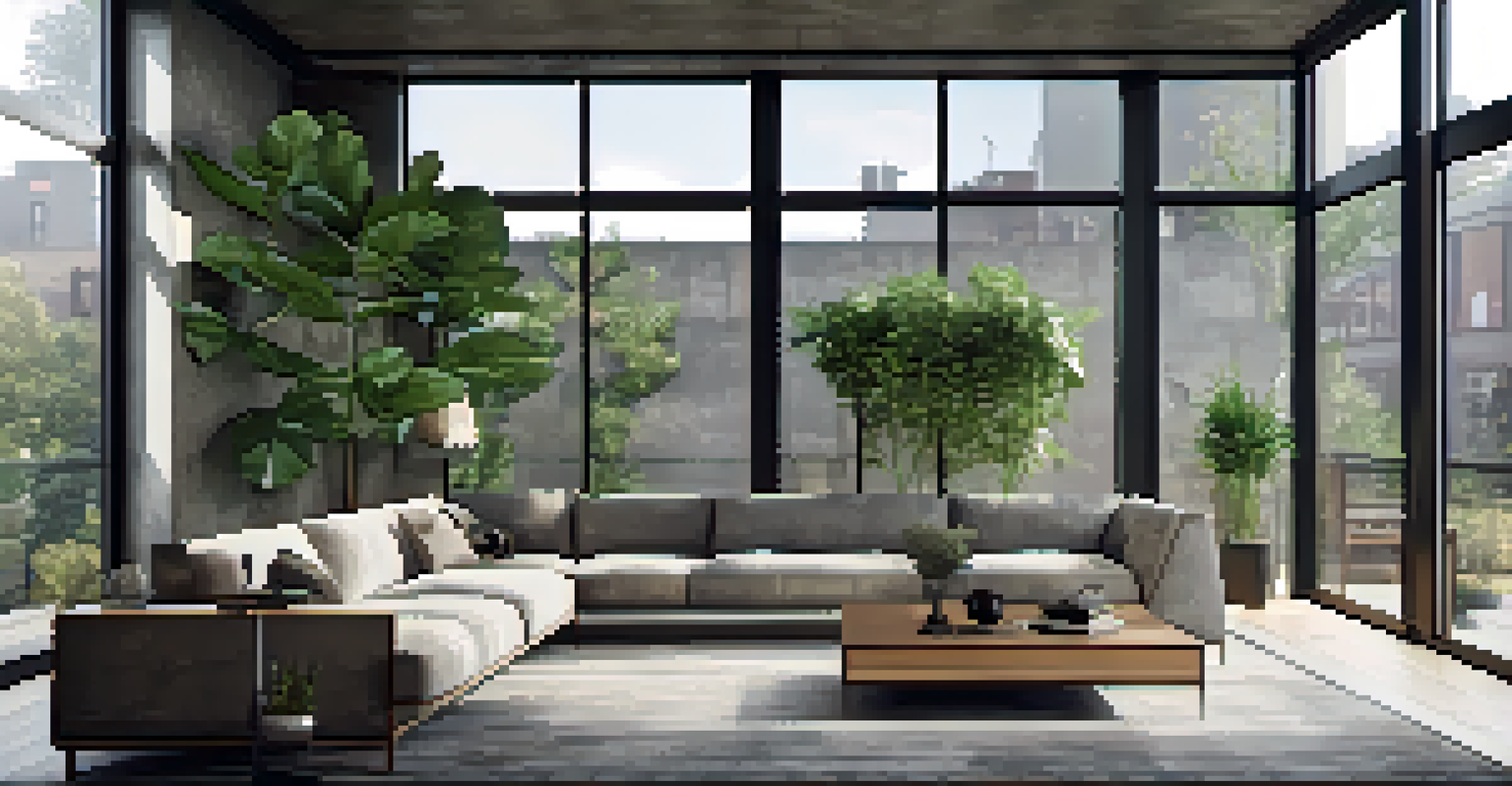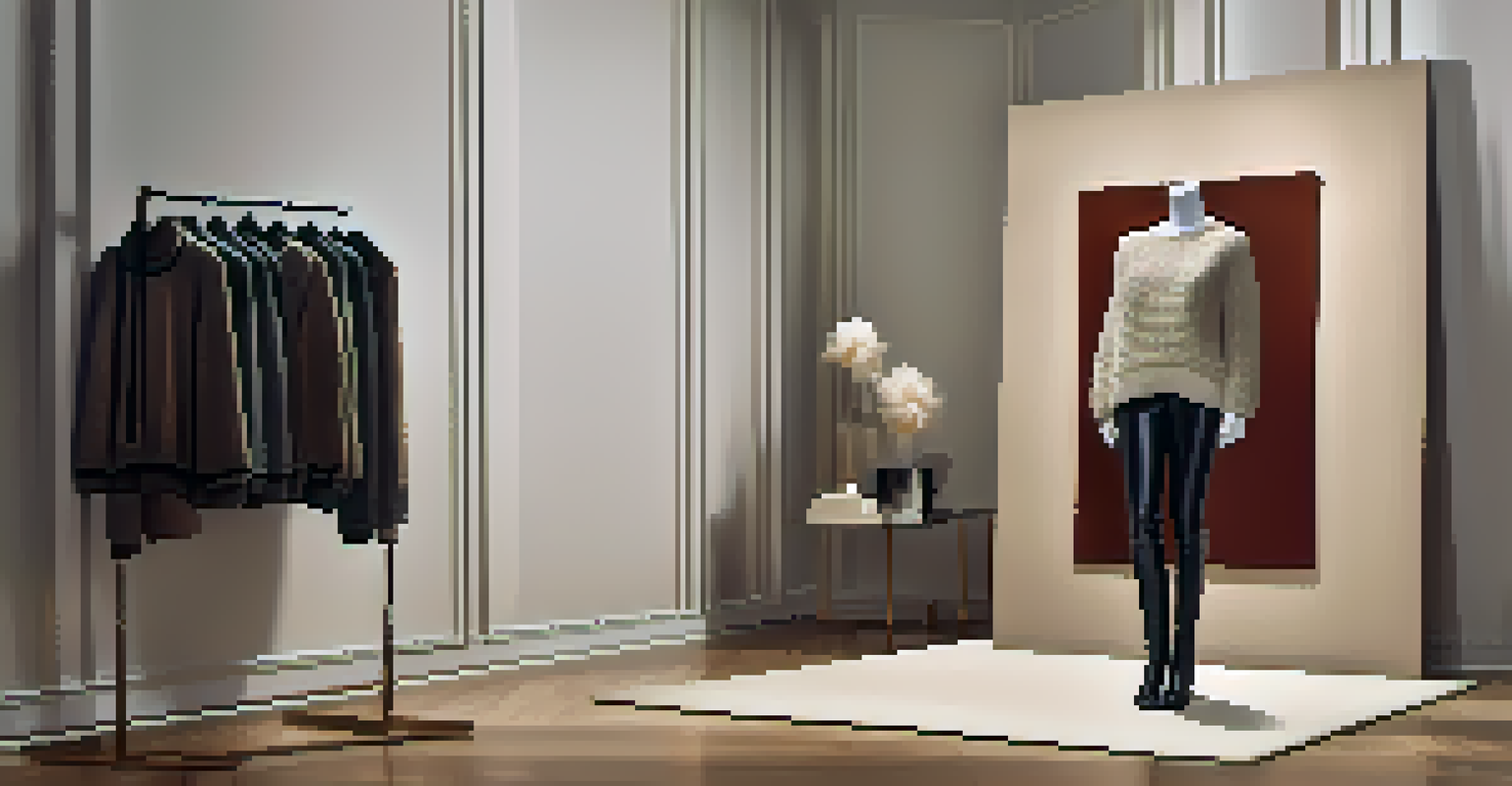The Role of Texture in Architecture and Fashion Design

Understanding Texture: A Key Element in Design
Texture plays a pivotal role in both architecture and fashion, acting as a bridge between the material and the sensory experience. In architecture, texture can evoke emotions and set the mood of a space, while in fashion, it influences how a garment feels against the skin. Essentially, texture adds depth and character, transforming flat surfaces into engaging experiences.
Texture is the touchstone of design, providing the depth and detail that brings spaces and garments to life.
For instance, a rough brick wall in a café might create a cozy, rustic atmosphere, inviting patrons to linger. Conversely, a sleek, smooth glass façade can project modernity and innovation, enticing passersby with its clean lines. Similarly, in fashion, a soft cashmere sweater can evoke feelings of warmth and comfort, while a shiny leather jacket suggests edginess and sophistication.
In both fields, texture is not just visual; it’s tactile and emotional. It encourages interaction and connection, making it a powerful tool for designers seeking to create memorable, immersive experiences.
The Role of Texture in Architectural Design
In architecture, texture influences the perception of space and functionality. Different materials, such as wood, stone, and metal, bring unique textures that can alter the aesthetics and atmosphere of a building. For example, the rough-hewn wood of a mountain cabin contrasts beautifully with the sleek concrete of a modern urban loft, each texture telling its own story.

Moreover, texture can enhance sustainability in architecture. Using natural materials with varying textures not only creates visual interest but also connects the structure to its environment. Imagine a building that mimics the textures of its surrounding landscape—this approach can harmonize the structure with nature, creating a seamless transition between indoor and outdoor spaces.
Texture Enhances Design Experience
Texture adds depth and character to both architecture and fashion, influencing emotions and interactions.
Textures also play a crucial role in how light interacts with surfaces. A textured surface can scatter light in various ways, adding depth and warmth to a space. Thus, architects must carefully consider texture as they design, as it fundamentally shapes the way we experience a space.
Texture's Influence on Fashion Design
In fashion, texture is a designer's secret weapon. It can transform a simple outfit into a statement, altering how clothing looks and feels. For instance, a flowy chiffon dress offers a different aesthetic and movement compared to a structured denim jacket, demonstrating how texture can dictate style.
Design is not just what it looks like and feels like. Design is how it works, and texture plays a crucial role in that experience.
Textures in fashion also play a part in cultural expression. Different fabrics and techniques signify various traditions and histories. A richly embroidered silk sari tells a story of craftsmanship and heritage, while a minimalist cotton t-shirt might represent modern simplicity and accessibility.
Furthermore, texture affects how garments fit and wear. A soft knit can hug the body comfortably, while a stiff fabric may create a more structured silhouette. Understanding these nuances helps designers create pieces that not only look good but also feel right for the wearer.
The Emotional Connection Through Texture
Texture is deeply tied to emotion, influencing how we respond to our environments. In architecture, a warm wooden interior can evoke feelings of safety and comfort, while cold, hard surfaces might create a sense of detachment. This emotional resonance is crucial for spaces like homes, schools, and hospitals, where well-being is paramount.
In fashion, the emotional connection is equally significant. Wearing a beloved, soft scarf can evoke memories of a cherished moment, while a sleek outfit might instill confidence. Designers leverage these emotional responses by choosing textures that align with the feelings they wish to evoke in the wearer.
Contrasting Textures Create Interest
Utilizing contrasting textures in design elevates the aesthetic appeal and highlights the unique qualities of materials.
Ultimately, texture serves as a language of its own, communicating feelings and experiences without words. This profound impact on human emotion makes texture an essential consideration for both architects and fashion designers.
Contrasting Textures: A Design Strategy
Utilizing contrasting textures is a popular design strategy in both architecture and fashion. In architecture, pairing smooth glass with rough stone can create a dynamic interplay, making each material stand out. This contrast can enhance visual interest and create a more engaging environment.
In fashion, mixing textures can elevate an outfit from ordinary to extraordinary. For instance, pairing a chunky knit sweater with sleek leather pants combines warmth and edge, appealing to various aesthetics. This approach not only showcases the designer's creativity but also allows wearers to express their individuality.
Contrasting textures also highlight the unique qualities of each material. By juxtaposing different textures, designers can draw attention to specific features, encouraging a deeper appreciation for the craftsmanship involved. It’s a powerful way to create a memorable visual impact.
The Future of Texture in Design
As technology advances, the future of texture in architecture and fashion is becoming increasingly exciting. Innovations like 3D printing and smart textiles are redefining how we approach texture. For instance, architects can now create intricate facades with varying textures that were once impossible to achieve.
In fashion, smart textiles can change texture on demand, allowing garments to adapt to different environments or user preferences. Imagine a dress that can shift from smooth to textured with a touch of a button—this level of versatility opens up endless possibilities for design and personal expression.
Future of Texture is Innovative
Advancements in technology and sustainability are reshaping how texture is approached in architecture and fashion.
Moreover, sustainability remains a key focus. Designers are increasingly exploring eco-friendly materials that offer unique textures while minimizing environmental impact. As the industry evolves, integrating innovative textures will undoubtedly play a significant role in shaping the future of design.
Final Thoughts on Texture's Impact
Texture is far more than a mere visual element in architecture and fashion; it is a fundamental aspect that shapes our experiences and emotions. Whether we're walking through a textured space or wearing a fabric that feels just right, texture influences our perceptions and interactions. It invites us to engage with our surroundings on a deeper level.
Both architects and fashion designers wield texture as a powerful tool, using it to tell stories, evoke feelings, and create memorable experiences. The careful consideration of texture can transform the ordinary into the extraordinary, making spaces and garments resonate with meaning.

As we move forward, embracing the multifaceted role of texture will be essential in creating designs that inspire and connect with people. Ultimately, it’s a reminder that design is not just about aesthetics but also about the sensory experiences that shape our lives.